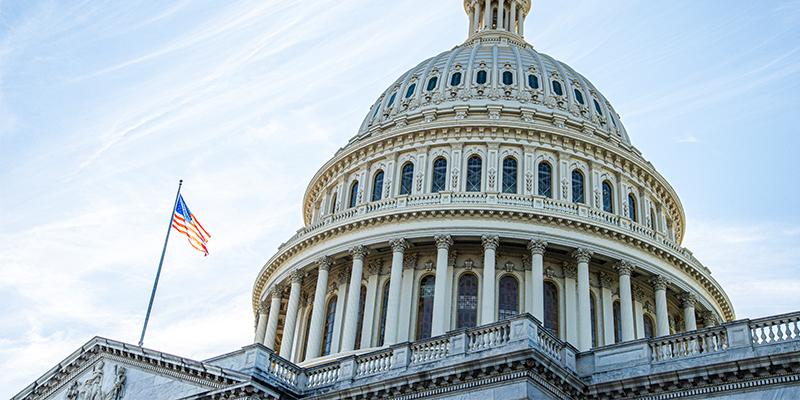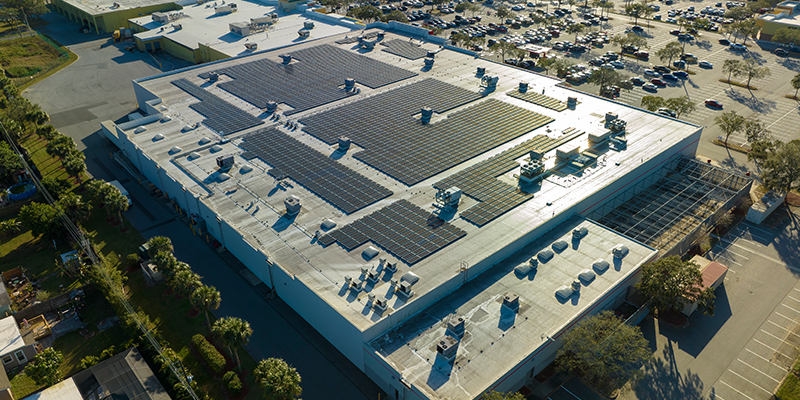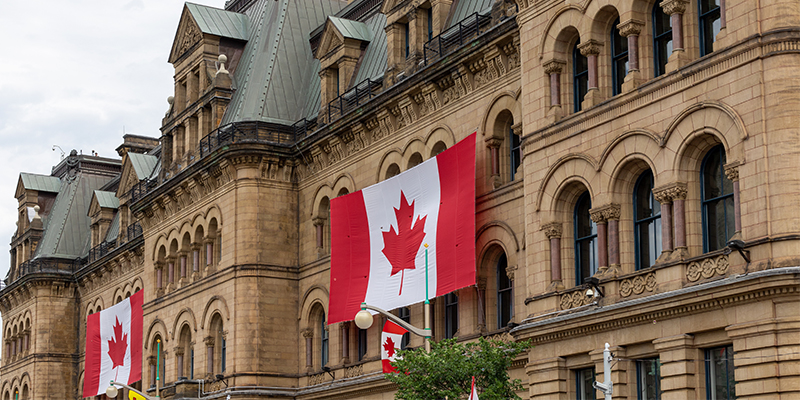By David Sobochan, CPA, MT
On July 4, 2025, President Donald Trump signed into law the One Big Beautiful Bill Act (OBBBA). One of the benefits we receive as members of NAIOP is the tireless efforts made by the government affairs team. Below is a summary of the provisions that impact the commercial real estate industry as well as commentary on some issues that NAIOP’s government affairs team overcame in the process.
Business State and Local Taxes Deduction (SALT): The legislation preserves the full deductibility of business state and local taxes. During the reconciliation process, Congress contemplated everything from eliminating SALT deductions (which included real estate taxes) to allowing 50% SALT deductions. Full deductibility was a win for the commercial real estate industry.
Section 199A: The legislation permanently extends the 20% deduction for pass-through business income and REIT dividends. This provision provides some parity between the tax rates to which pass-through business owners (29.6%) and corporations (21%) are subject.
Bonus Depreciation: The legislation permanently extends 100% bonus depreciation for assets placed into service after Jan. 19, 2025. Taxpayers will need to be aware of the “written binding contract rule” for contracts entered into prior to Jan. 20, 2025, as this rule could prevent 100% bonus depreciation from applying – in which case, the taxpayer would still apply the rules in existence prior to the passage of OBBBA, which contemplated bonus depreciation rates of 60% for assets placed in 2024; 40% for assets placed into service in 2025; 20% for assets placed into service in 2026; and 0% after the 2026 tax year.
Factory Expensing: The legislation provides the ability to expense 100% of qualified production property where construction, reconstruction or erection begins after Jan. 19, 2025, and before Jan. 1, 2029, and is placed in service after July 4, 2025, and before Jan. 1, 2031. Qualified production property is defined as nonresidential real property, which is (1) used by the taxpayer as an integral part of a qualified production activity and which is (2) placed in service in the United States or any possession of the United States. Qualified production activity is the manufacturing, production or refining of a qualified product. Such activities of the taxpayer must result in a substantial transformation of the property comprising the product.
The biggest takeaway on this provision is that it is not available for leased buildings. Only owner-occupied buildings would currently benefit.
Business Interest Expense Limitation: For tax years beginning after Dec. 31, 2024, the legislation permanently extends the modified calculation of the business interest expense limitation to EBITDA (earnings before interest, taxes, depreciation, and amortization). Previously, amortization and depreciation could not be added back when applying the limitation.
Excess business losses: Permanently extends the disallowance of a deduction for excess business losses, indexes the $250,000 threshold for inflation, and retains the carryover of an excess business loss as a net operating loss. During the reconciliation process, a proposal was included that would have limited the ability to convert an excess business loss to a net operating loss. If that provision became law, it would have severely limited the benefits of the 100% bonus depreciation and factory expensing provisions.
Taxable REIT subsidiary test: The legislation increases the flexibility of REITs by raising the percentage of assets of a REIT that may be held in a taxable REIT subsidiary from 20%-25% in tax years beginning after Dec. 31, 2025.
Condominium construction tax accounting: The legislation provides an exception to percentage of completion method of accounting for certain residential construction contracts and extends the construction contract period from two to three years. Prior law resulted in phantom income from the application of the percentage of completion method for condominium developers.
Retaliatory tax measures: During the reconciliation process, Section 899 included provisions that could have increased tax withholding on foreign investors to 50%. This would have created a deterrent for foreign investors to invest in U.S. real estate. NAIOP worked with other real estate trade associations to inform members of Congress of this issue, and it was removed from the final legislation.
Opportunity Zones (OZ): The legislation establishes a permanent OZ policy that builds off the original OZ structure. The provision creates rolling, 10-year OZ designations beginning on Jan. 1, 2027. This provision maintains the OZ designation process from the Tax Cuts and Jobs Act and strengthens the eligibility requirements by updating the definition of a low-income community (LIC) tract and eliminating the ability for contiguous tracts that are not LICs to be designated as OZs.
The definition of “low-income community” is narrowed to census tracts that have a poverty rate of at least 20% or a median family income that does not exceed 70% of the area median income. Additionally, a guardrail is added to ensure that the term “low-income community” does not include any census tract where the median family income is 125% or greater of the area median family income.
The provision preserves the three taxpayer benefits from the Tax Cuts and Jobs Act but modifies them as follows:
- Deferral Benefit: This is now a “rolling benefit.” The capital gain that was originally deferred as an eligible investment into a Qualified Opportunity Fund (QOF) is required to be included in income in the taxable year that includes the earlier of: 1) the date the QOF interest was sold or exchanged, or, 2) the date that is 5 years after the date the investment in the QOF was made.
- Reduction Benefit: A taxpayer who holds his or her QOF investment for 5 years will be eligible for a 10% basis step-up that would be applied when the taxpayer is required to recognize the original deferred gain into income. Effectively, this causes 10% of the original gain that was deferred to no longer be taxed.
- Exclusion Benefit: A taxpayer can make an election to have the fair market value (FMV) of his or her QOF interest equal the FMV on the date such investment is sold or exchanged if sold before 30 years after the date of the investment; if sold after a 30-year hold, it would be the FMV of the investment as of the 30-year holding period date.
Additionally, the provision establishes a new type of QOF that invests 90% of its assets in an OZ comprised entirely of a rural area. Investment in these qualified rural opportunity funds (QROFs) will receive a 30% step-up in basis under the “reduction” benefit (as opposed to the general 10%). Additionally, a special rule is created that lowers the “substantial improvement” threshold of existing structures from 100% to 50% in rural OZs.
Lastly, this provision adds additional reporting requirements moving forward for QOFs and Qualified Opportunity Zone Businesses (QOZBs) that will require them to provide the following information:
- NAICS code(s) of the businesses the QOF and/or QOZB are operating in.
- The approximate number of residential units (if any) for any real estate property held by the QOF and/or QOZB.
- The approximate number of full-time equivalent employees of the QOF/QOZB or such other indication of employment impact.
Penalties will be assessed for failure to comply with the reporting requirements. These penalties increase in amount if the fund meets the definition of a large QOF, which has gross assets in excess of $10 million.
The first round of OZs available under the permanent policy will begin on Jan. 1, 2027.
New Markets Tax Credit (NMTC): The legislation permanently extends the NMTC, which was scheduled to expire on Dec. 31, 2025. Providing certainty in the NMTC program will allow all stakeholders to properly plan and execute deploying this subsidy into projects.
Low-income housing tax credit (LIHTC): The legislation permanently increases the allocation of low-income housing tax credits to states by 12% and permanently lowers the bond-financing threshold to 25% for projects financed by bonds starting in 2026. This provision renews and refreshes the LIHTC program, which should help retain developer and investor interest.
Clean energy tax incentives: The legislation scales back many of the incentives in the Inflation Reduction Act. However, it does preserve the incentives for certain projects including:
- Wind and Solar Projects: Section 48E projects must be constructed no later than 12 months after July 4, 2025, and must be placed into service by Dec. 31, 2027. Credit termination does not apply to energy storage technology placed in service at wind and solar facilities.
- Energy-efficient Commercial Building Deductions: The expanded 179D deduction is still available for projects that begin construction by June 30, 2026. For property whose construction begins after June 30, 2026 the deduction is terminated.
- Energy Efficient Homes: Section 45L credits expire for homes acquired after June 30, 2026.








